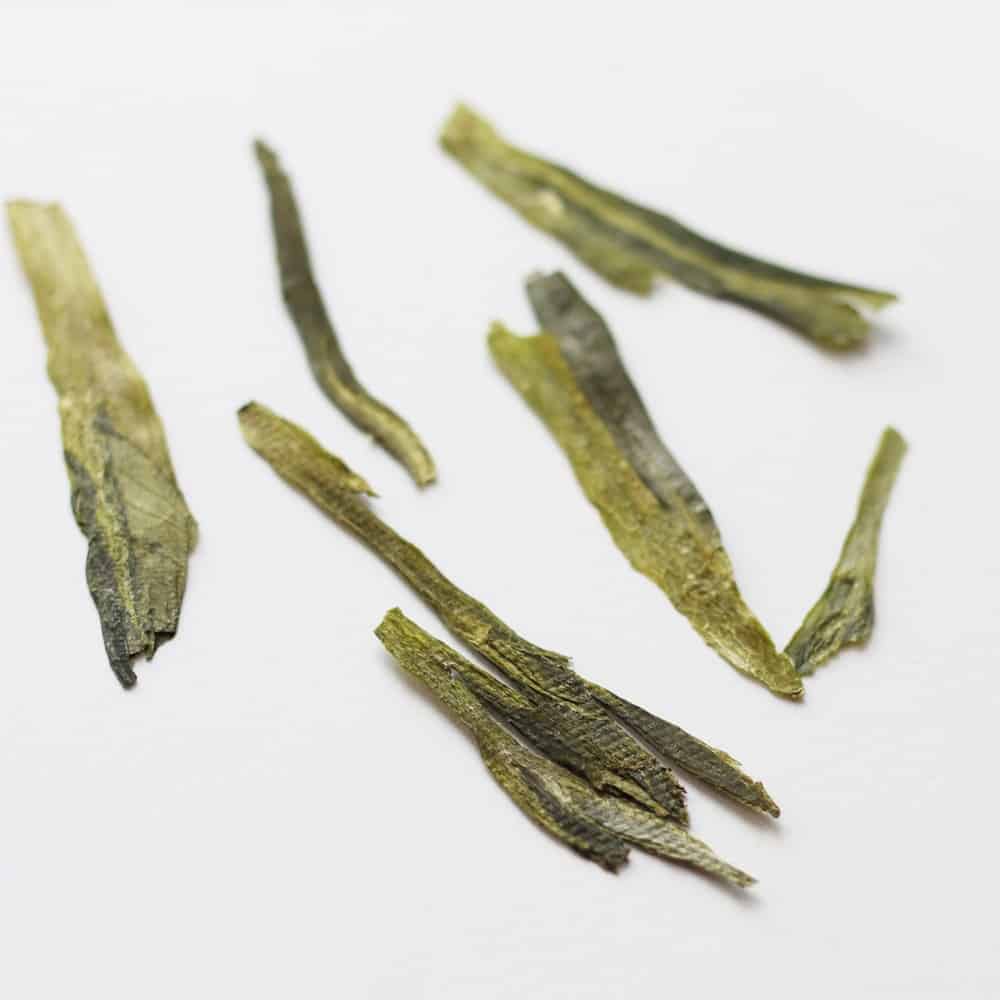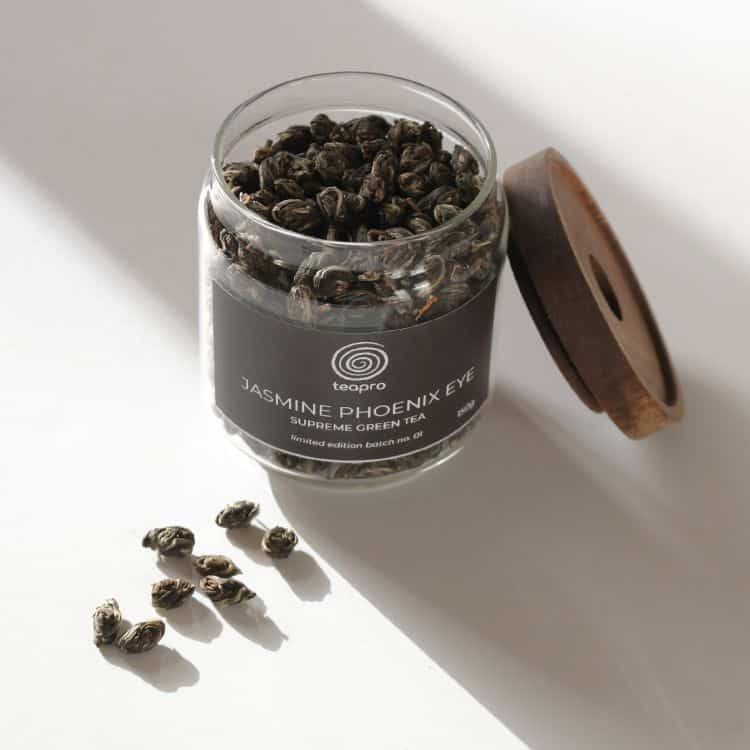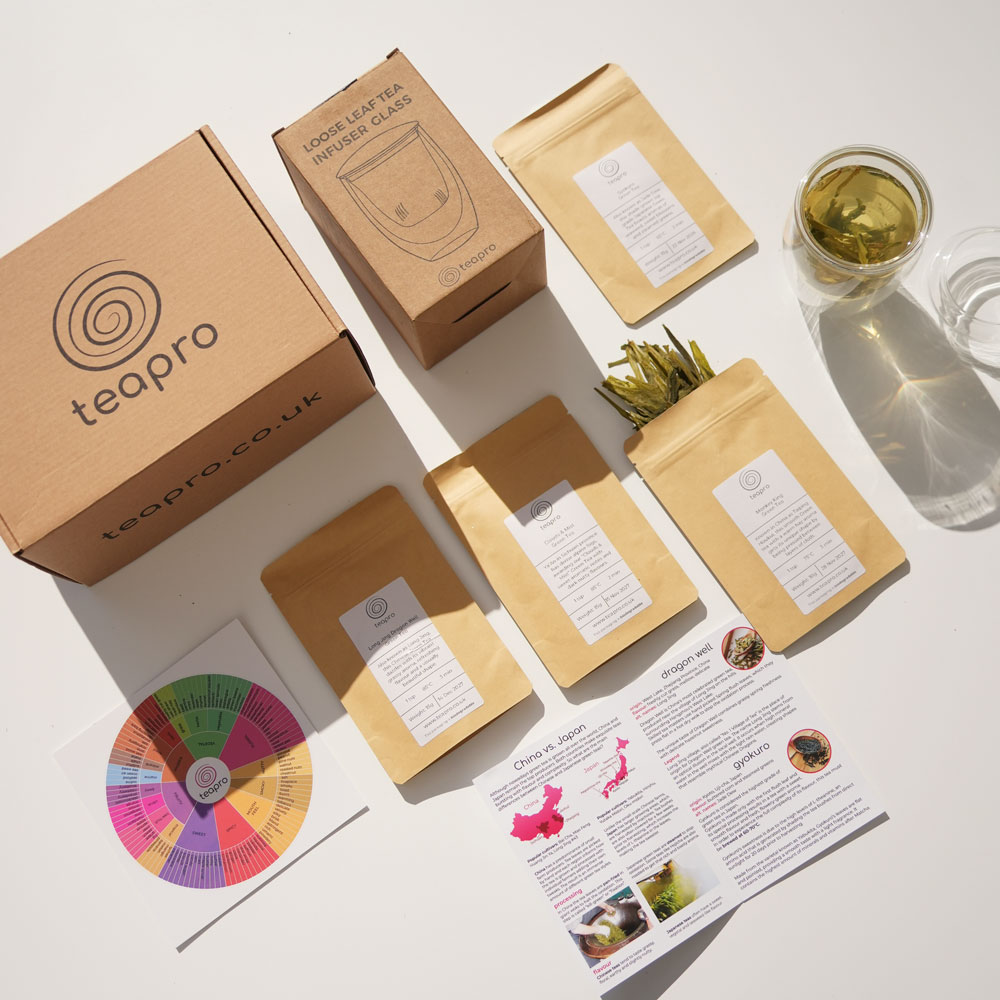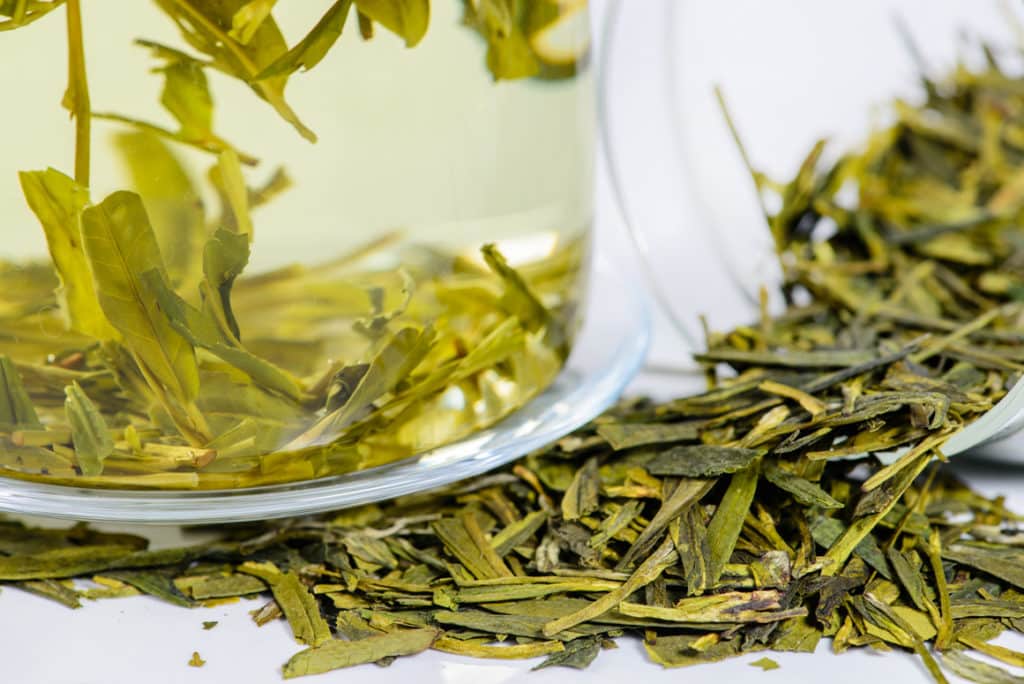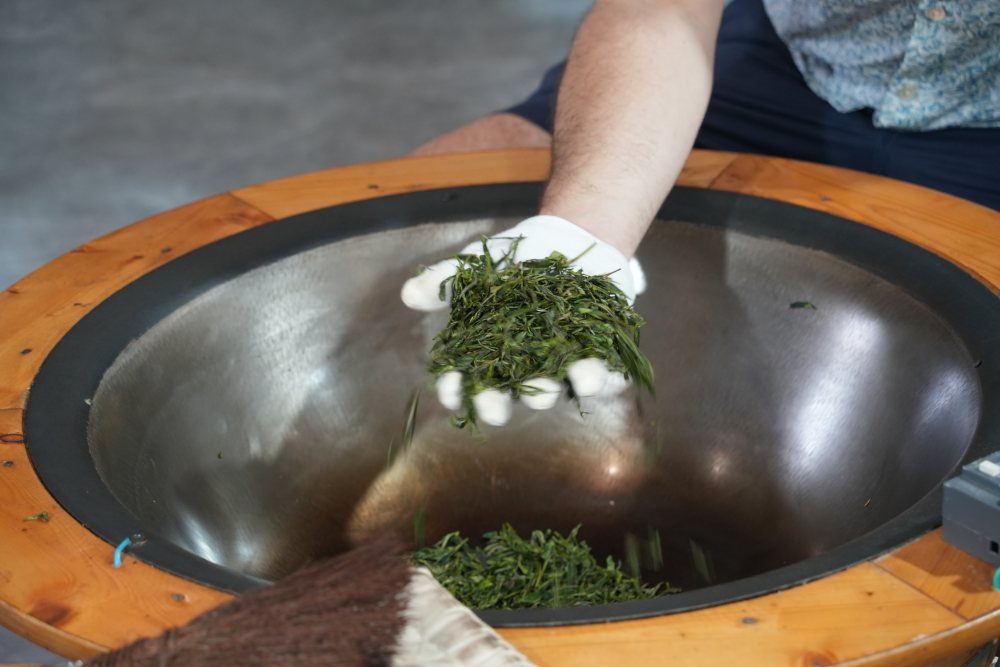Chinese green tea
As the birthplace of tea, China has cultivated green tea for over 3,000 years, embedding it deep within the rituals, philosophy, and daily life of Chinese culture.
Grown in misty mountain regions and hand-plucked during the prized early spring harvest, these teas are made from the Camellia sinensis var. sinensis plant and undergo a unique pan-firing process that halts oxidation while preserving their natural flavour.
Unlike steamed Japanese green teas, Chinese green teas are gently roasted in woks, giving them a distinctive toasty, nutty, or chestnut-like character. From the smooth, mellow notes of Longjing (Dragon Well) to the floral sweetness of Clouds & Mist, each cup tells the story of its region, soil, climate, and the tea master’s skill.
Rooted in ancient legend and embraced by emperors, monks, and artisans alike, Chinese green tea is more than a drink – it’s a daily ritual of clarity, connection, and calm.
Whether enjoyed through the precise Gongfu tea ceremony or a simple glass teapot, it continues to offer a timeless experience steeped in craftsmanship and culture. With every sip, you taste not only the leaf, but the legacy.
our Chinese green tea collection
jasmine green tea
BLACK LABEL EDITION
Teapro Black Label Supreme Phoenix Eye Jasmine Green Tea | Limited Edition
green tea gift set
The best green tea uk tea discovery box.
“Shades of Green” Green Tea Gift Set
New to green tea or looking to deepen your appreciation?
Our Green Tea Discovery Box is the perfect way to explore and compare the unique flavours of Japanese green tea and Chinese green tea side by side.
This curated selection features our favourite, handpicked teas sourced from small, sustainable farms in China and Japan.
From sweet and delicate to toasty and bold, each variety showcases the remarkable diversity of natural green tea.
It’s a luxurious tasting journey designed to help you understand what makes pure green tea so special, whether it’s the umami depth of a green tea Japanese Gyokuro or the nutty warmth of Long Jing Dragon Well.
Ideal as a gift or personal treat, this flavourful box is a must-have for green tea lovers and curious newcomers alike.
what is green tea?
Green tea is a type of tea made from the leaves of the Camellia sinensis plant. Unlike black tea or oolong tea, green tea is minimally oxidised during processing, which helps preserve its green colour and natural antioxidants like catechins and polyphenols.
It’s known for its fresh, grassy flavour and numerous health benefits, including antioxidant and anti-inflammatory properties.
Chinese vs. Japanese green teas
Chinese green teas are typically grown in mountainous regions and then pan-fired to halt oxidation, a method that gives them a smoother, more mellow taste with nutty, floral, or slightly roasted notes.
In contrast, Japanese green teas are often shade-grown, which boosts their chlorophyll and amino acid content, then steamed shortly after harvest. This results in a vibrant green colour and a bold, umami-rich flavour with vegetal depth.
what does green tea taste like?
Chinese green tea offers a delicate and nuanced flavor profile that reflects its careful craftsmanship and regional terroir.
The taste is typically softer, rounder, and less astringent than Japanese green tea, with a natural sweetness and a smooth, lingering finish. Depending on the variety and processing method, it can reveal subtle notes of:
– Toasted nuts or roasted chestnut (like in Longjing / Dragon Well)
– Floral and fruity undertones (like in Clouds & Mist)
– Orchid and stone fruit hints (like in Taiping Houkui / Monkey King)
how to prepare green tea
To brew green tea properly, start with loose leaf tea for the best flavour and aroma. Use 1-2 teaspoons of tea leaves per cup (350ml) of water. Steep for about 2-3 minutes.
Green tea brewing equipment
For the purest flavour experience, we recommend using a glass teapot or an infuser glass. Unlike clay or metal teapots, glass doesn’t retain aromas from previous brews, so there’s no risk of flavour contamination – just a clean, authentic taste every time.
Water temperature for green tea
Although Chinese green teas are more robust and usually can be brewed with boiling hot water, lower temperatures will bring out more subtle notes.
Can green tea be re-steeped?
You can generally re-steep green tea leaves 1 – 2 times, increasing the brewing time with each infusion. The key is experimenting within these guidelines to find the flavour profile you love most.
green tea FAQs
Chinese green tea is made from unoxidised tea leaves and is known for its delicate flavour, light body, and slightly nutty or grassy notes. Unlike Japanese green tea (which is usually steamed), Chinese varieties are typically pan-fired or roasted, giving them a unique aroma and smoother taste.
Chinese green tea is rich in antioxidants like catechins, which support heart health, boost metabolism, and help protect against free radicals. It’s also known to aid digestion, support weight management, and improve focus.
Yes, drinking Chinese green tea daily is generally safe and beneficial for most people. It offers a gentle caffeine boost and a steady source of antioxidants. Stick to 2–3 cups a day to enjoy the benefits without overdoing the caffeine.
Yes, Chinese green tea can support weight loss by boosting metabolism and improving fat oxidation. It’s most effective when combined with a balanced diet and active lifestyle.
It contains moderate caffeine – less than coffee but enough to gently increase energy and alertness. It’s ideal for those who want a milder alternative to coffee without the jitters.
The most popular Chinese green tea variety is Longjing Dragon Well, but we also love unique premium green teas like. Clouds & Mist and Supreme Phoenix Eye Jasmine Green Tea – each known for its distinct flavour profile and high antioxidant content.
You can, but it’s not traditional. Adding honey or lemon is fine for taste and digestion, but milk may reduce antioxidant absorption. For a purer experience, enjoy it plain.
In excess, green tea may cause nausea, digestive upset, or sleep issues due to caffeine. Sensitive individuals or those with certain health conditions should consult a healthcare professional.

